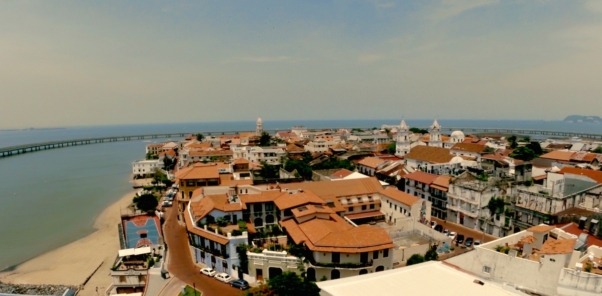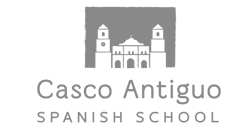Where to Celebrate Carnival in Panama
If you’re visiting Panama, Carnival provides a great way to see it at its best. It’s a vibrant display of Panama’s music, dance and culture, and brilliantly highlights the Panamanian style of celebration – namely, large and loud.
Thought Carnaval was only for the Brazilians? Think again. Every February the country comes alive for this 4-day celebration that’s deeply entrenched in Panama culture. Nation-wide, there are street parties, parades, fireworks and ‘mojaderas’ – water balloons, buckets and even fire hoses spraying you till you’re soaking wet. If you’re in Panama for this mega-holiday, you’re in for a treat.
Carnival is celebrated all over Panama and every town or city will have their own celebration. These are some of our recommendations for great places to celebrate!

Elements of Carnival in Panama
Expect to see a dirty devil (Diablico Sucio) or two during Panama’s carnival. These masked men are part of Panamanian folklore and the masks are made by local crafters, often a family affair. Different parts of the country have different devil dances. Their antics are believed to stave off evil spirits and traditionally, they carried a pungent animal bladder which seeped onto their clothes as they danced and got sweaty, turning their clothes dirty. And here the name “dirty devil” was derived.
“Tambores” or drums are another Panamanian symbol. The sound of beating drums will accompany you wherever you go for the entire week of carnival. Years of experience goes into constructing each drum’s unique sound. El Tamborito (the little drum) is the national song and dance of Panama. Referred to as a courting dance, it is performed by a man and woman in traditional costume.
The men’s attire is called “El Montuno” while the women wear the stunning Polleras. The Panamanian Pollera comes in many assortments and the most ornate of them all, the “Pollera de Gala” is considered to be one of the most beautiful national costumes in the world. Extravagant gold jewels and beautiful hair accessories called Tembleques accompany the Pollera. Panamanian women formerly used natural flowers to adorn their hair. Today the Tembleques are made of pearls, crystals, fish scales and wires.
Las Tablas
For the ultimate carnival experience, visit the carnival queens in the town of Las Tablas, which hosts the most extravagant celebration in the country. It is locally considered as the best place to celebrate carnival in Panama, even just to witness the rivalry between Calle Arriba (Up Street) and Calle Abajo (Down Street). So intense is their rivalry that residents do not speak to each other at all for the rest of the year. Each street vies to put on a more grandiose show and has it’s own carnival queen who wows the crowds with her glittery attire and smile. The winner is decided on the morning of Ash Wednesday, though there is never one decisive winner: both sides claim to have put on the most extravagant show. The Las Tablas carnival is so iconic that it was immortalised in the 2017 movie, Donaire y Esplendor by Arturo Montenegro.
Visiting Santo Domingo, a little town about 5 minutes from Las Tablas is also recommended. The best day to go is on the Tuesday of Carnival in order to catch the Pollera parade and the Tamboritos there. This starts late afternoon. The parades in smaller towns tend to start earlier than that of Las Tablas.
Carnival in Panama City
If you live on Panama City’s Avenida Balboa, catch up on all your sleep the week prior to Panama carnival as Cinta Costera and Balboa are the scenes of all Bacchanalia in the capital. A procession of floats, dancers and revellers in wacky attire descend upon this picturesque locale for the city’s biggest street party of the year. Laws about public drinking are thrown to the wind, and you can fuel up on food and drink at the numerous stalls along the way. There’s live music, face painting for the kids and a whole lot of dancing. There is usually a strong security presence to ensure that the festivities run without incident. Arrive early in the afternoon for any hopes of being near the procession; the full-blown parade gets in full swing after sunset. You WILL get wet, so leave the fancy jewellery and valuables at home. People holding water guns will soak you even if the water-filled trucks don’t. A chorus of fireworks round things up in style on the final evening.
Bocas del Toro
The carnaval party is ramped up a notch or two in Panama’s party capital, Bocas del Toro. Bocas’ Dirty Devils carry real whips that they use on anyone they deem to be misbehaving, so perhaps it’s best to admire them from a safe distance. Bocatorenos will happily grab any opportunity to party; Bocas del Toro is a merry-go-round of fun all year round; during carnival however, the forecast is a chaotic melee of food, drink and excess. Isla Colon’s Main Street will be the place to situate yourself to take in all the entertainment though the local bars and clubs will also have a spirited atmosphere. Bocas del Toro is a 50-minute flight from Panama City with Air Panama or a 10-hour journey by bus.
Penonomé
Though you WILL get wet and be nestled between a crowd that’s hyped up on Reggaeton music and drinks, carnival celebrations in Panama’s Penonomé tend to be on the tamer side, making this a suitable option for anyone who didn’t secure an accommodation booking or feels overwhelmed by the thousands of people at the party in Las Tablas. What sets Penonomé apart is their unique “aquatic” carnival whereby the procession actually floats along a river. You won’t find that in Rio. Those who are ready for the real party can flock to Paradise Peskito, a secluded structure within Penonomé with exclusive access to DJs, musicians, an open bar, food court and even VIP passes.
Pedasí
This small beach town in the Los Santos province of Panama provides an even calmer carnival experience; sweetened further by the fact you can dip off to the beach at a moment’s notice. Many head to Pedasí’s main street in the town centre with coolers and chairs to sit back and take it easy. This might be a laidback town, but the show goes on till the small hours of the morning. The town park is transformed entirely and blocked off for Panama’s festival, while music swarms from every look and corner: homes, car boots and of course, from the carnival procession.
Ocu
Revenue from Panamanians choosing this small village in the Herrera province as their carnival destination keeps Ocu afloat throughout the year. Much smaller than the celebrations in Las Tablas and nearby Chitre, Ocu still offers the full traditional Panamanian festival experience: carnival queen rivalry and all. Theirs is a “roving carnival”, where merrymakers sway and dance along with the band which moves from house to house.
Panama Carnival survival tips
- Bring bottled water with you.
- There are four days of carnival, so bring a change of clothes for each day. You WILL get wet during the morning Culecos.
- Don’t flaunt your possessions or carry expensive belongings like phones carelessly.
- People often dress formally during the night parades, so semi-formal attire is recommended for the evenings.
- Bring sunscreen with you, Panama is very hot during this time of the year.
- Make sure you have access to a first aid kit.
- Be prepared for heavy traffic when coming back into Panama City after the event.
Carnival in Panama is a festival for all ages, tribes, and cultures; locals and foreigners alike. “That” holiday feeling is impossible to shake in Panama on the best of days; this soars exponentially during these four days of street parties, water fights, alfresco drinking and street food, making it the perfect time to feast on Panama at it’s finest.
Recent Posts
Casco Antiguo
Spanish School
Located in the heart of Panama City’s Historic District
Quick Links
Recent Posts
Contact Info
Copyright 2020+ Casco Antiguo Spanish School | All Rights Reserved | Avenue A y Calle 5, Casco Viejo, Panama City, Panama | Tel: (+507) 228 3258 | US Tel: (203) 820 2234 | Whatsapp: +507 6801 3147 | info@cascospanish.com
